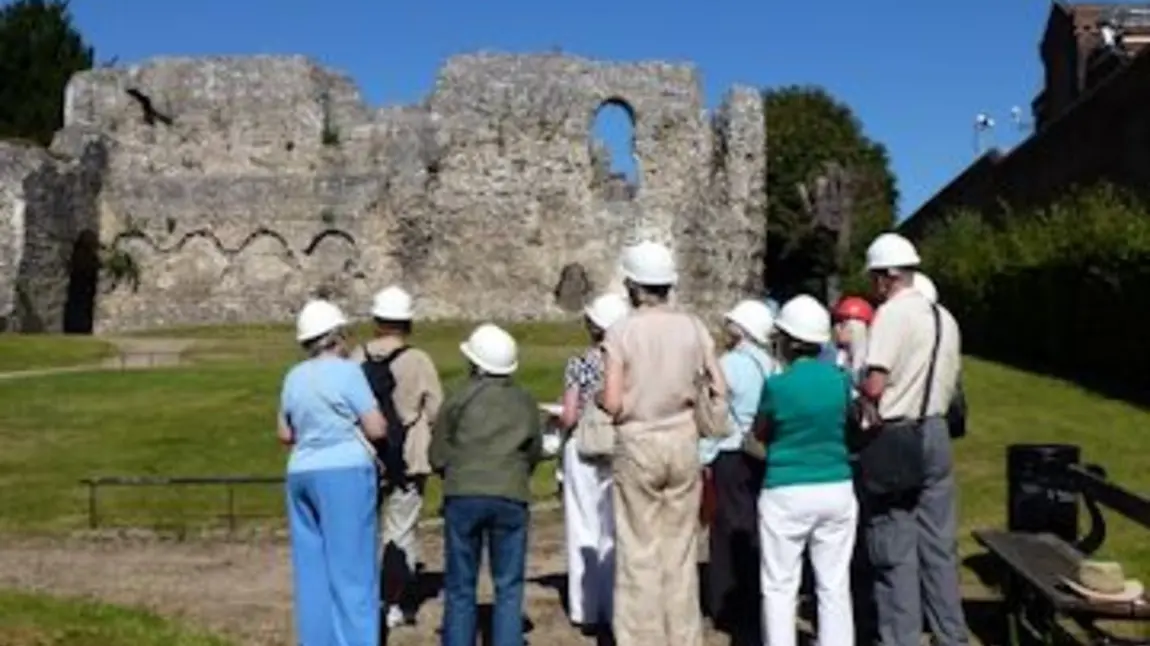Reading Abbey Quarter passes the first stage

It means the council can now move on to developing more detailed plans for the project which includes widespread conservation work of the Abbey Ruins and Gate, the site-wide interpretation of the Abbey Quarter area and a programme of events and activities. There is now a two year window for the council to work up its application seeking the full grant amount of £1.7million from HLF.
The council’s bid has public backing with more than 1,150 responses received to a public consultation earlier this year with 97% supporting the council’s application to the Heritage Lottery Fund. Tours of the ruins were also hugely oversubscribed during Saturday’s Water Fest event which shows the level of public interest in the site. There will be another opportunity to take in the history of the Abbey Quarter in the autumn as part of the Heritage Open Days tours.
News of the Abbey Quarter bid passing this first stage has been welcomed by Councillor Paul Gittings, Lead Member for Culture at Reading Borough Council. He said: “This is fantastic news as the council moves towards delivering its long standing ambition to conserve and reopen the Abbey Quarter to Reading’s public. We know there is a great deal of support for the project, both on a local and national level.
“Today’s news is just the start however. I know officers are already moving forward with plans to enter the development phase of the project and that they are aiming to be able to submit the full grant application to HLF in the next 18 months.”
Councillor Tony Page, Lead Councillor for Strategic Environment, Planning and Transport, added: “We are lucky in Reading to have a site of such historical significance right in the heart of the town centre. The council’s bid is about opening up the Abbey Quarter for residents, visitors and future generations to appreciate and enjoy. I look forward to the next landmark when we submit the full grant application to HLF and hopefully positive news on the council’s bid to follow.”
Many of the Quarter's historic features are recognised as having national and local importance, being designated as part of a Scheduled Ancient Monument and Listed Buildings. Reading Museum's significant collections relating to the Abbey are of international importance and both reflect Reading's long history of global links.
The main conservation priorities are the Abbey Ruins and the Abbey Gateway, both part of the Scheduled Ancient Monuments and on the English Heritage ‘Heritage at Risk Register’. Separate funding has already improved Town Hall Square in 2013 and has been secured to restore St Laurence's churchyard wall during 2014-15.
The project to conserve the abbey was initiated after public access to the ruins was closed in summer 2009 after a condition survey highlighted the ‘poor and rapidly deteriorating condition of the walls’. Working with English Heritage, Reading Borough Council has already completed comprehensive condition surveys and investigations of the Abbey Ruins and Abbey Gate. The condition surveys have established a detailed schedule of repairs and a cost plan which is included in the Council’s Heritage Lottery funding bid.
Notes to editors
Reading's Abbey Quarter has been the traditional civic and ceremonial heart of the county town of Royal Berkshire since the 12th century. The quarter is defined by the medieval streets and rivers that outline the precinct of Reading Abbey. This area contains the substantial standing remains and buried archaeology of Reading Abbey, telling its story from the foundation by Henry I in 1121 to its dissolution by Henry VIII in 1539.
The quarter shows evidence of all periods since the abbey's dissolution: a royal residence, civil war defences, Jane Austen's school, the impressive municipal buildings, Victorian public gardens and Oscar Wilde's infamous Reading Gaol. There are buildings by famous architects including Sir John Soane, A.W.N. Pugin, Alfred Waterhouse and Sir George Gilbert Scott. Significant public sculpture within the quarter includes Simond's Maiwand Lion and statue of Queen Victoria, and contemporary artworks such as the Oscar Wilde Memorial Walk.
Reading Museum is also located within the quarter and has important collections relating to the heritage of Reading and the quarter, particularly Reading Abbey and later Victorian industrial heritage.
The current Abbey precinct area has piecemeal protection under several local and national designations and policies. Key parts of the site are a Scheduled Ancient Monument, and as such are protected under the provisions of the Ancient Monuments and Archaeological Areas Act 1979; the Abbey Ruins and the Abbey Gate are also Grade I listed.
Further information
Reading Borough Council: Oscar Mortali, Media Relations Manager - Acting Head of Communications on 0118 937 2301.
HLF press office: Laura Bates on 020 7591 6027, email: lbates@hlf.org.uk.